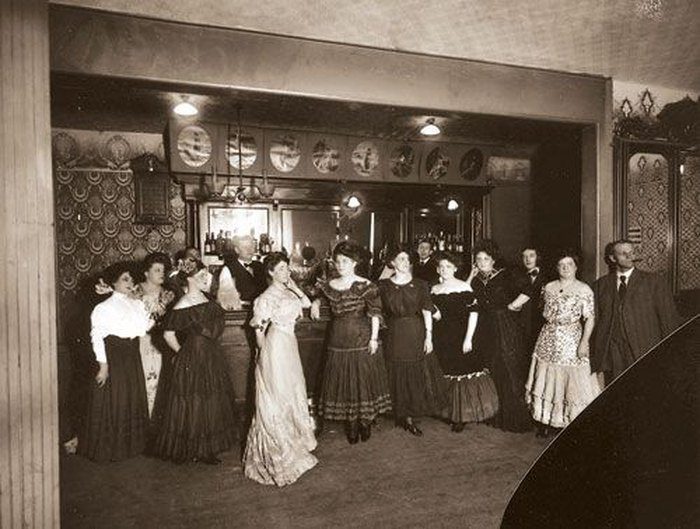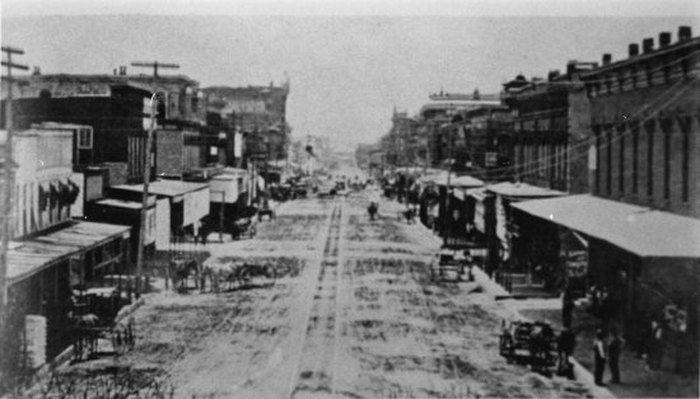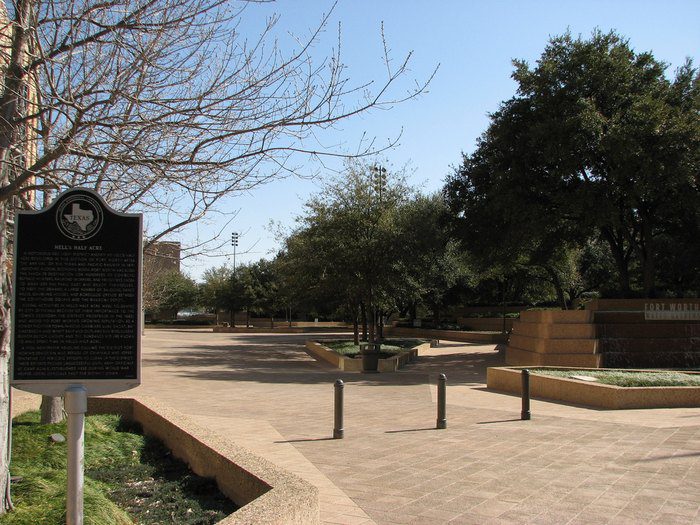The Victorian era and the beauty of Los Angeles with its sights, all of it, have fascinated travelers. But there was one notorious place that had the exact opposite effect. We’re talking about a part of Alameda Street, which was part of the old red light district. For 50 years, this street was called Nigger Alley, and its history deserves attention.
Los Angeles Future will tell you about what women of easy virtue were like in those days and in what conditions they worked.
Hell’s Half Acre
That was the name of the district consisted of salons, restaurants and brick houses with tiny rooms lined up in a row. It was where women served clients, while there could be from 13 to 30 men per night. Near the small beds, the workers stood on wooden platforms, demonstrating their charm and beauty.
They were called fallen women from the bed district who lived at the mercy of gentlemen, pimps and landlords. In wild Southern California, girls who reached some level in the ancient profession were called $1 prostitutes.
The workers of the red light district encouraged poor clients. Respectively, they received less money while working in unsanitary and extremely unsightly premises.
The fascinating book called Angels for Sale: A History of Prostitution in Los Angeles by AnneMarie Kooistra gives a sufficiently detailed picture of those times. In the City of Angels, there were also luxurious brothels where women earned good money. The situation was quite the opposite for the women of Hell’s Half Acre, where they paid exorbitant fees only for a tiny bed and a bathroom sink. It was best demonstrated by the numbers:
- For a month in a respectable boarding house, women were paying $5 or $6
- For a month of living in needy conditions, women of the red light district paid $70, which was $18 per week.

In other words, women worked tirelessly, serving clients, while landlords and their pimps got rich.
Debauchery in the city
It all started back in the 1870s when this district was the first stop on a cattle drive. As the city grew, so did the importance of the railway stop and the infamous Hell’s Half Acre. The violent reputation of the district was known for led to it being called the Bloody Third Ward. That very district drew the attention of many outlaws, with one group, in particular, becoming infamous, the Wild Bunch, AKA Fort Worth Five.

Bartolo Ballerino, real estate and wealth
This man with Italian roots immigrated to California during the Gold Rush. He immediately invested money in real estate. Interestingly, since the 1850s in Los Angeles, the red light district has been the center of criminal activity and violence. But that didn’t scare him, so he bought up most of that land.
Bartolo Ballerino was a landlord who earned more than others in those days because he was the “father” of the system of renting tiny rooms and beds to prostitutes in Los Angeles. His International Hotel housed sex workers and next to it was a restaurant and salon where women attracted new clients. The workers included Chinese, Indian, Latina, Mexican and Belgian women.

Willingness to leave the business
Of course, the working conditions were unbearable and the pay didn’t justify the efforts. When one of the women wanted to leave the business, the pimp used violence. There are stories when a man could even kill a worker because he lived on her earnings. Unfortunately, there were many such stories. The district was considered notorious because of the following information:
- Frequent suicides among sex workers who could not stand it
- Overdose of women with opium and other narcotic substances
- Drug addiction and sexually transmitted diseases
- Violence from pimps and clients.
Historians have found that in those days, prostitutes died several times more than gamblers or shooters. In 1897 this district was first mentioned in a souvenir sports guide for gentlemen who wanted to have fun.

Help for women
They needed it. Religious leaders did everything possible to close the business, but party politics decided everything. In 1902, the Republican newspaper, Los Angeles Times, supported P. W. Powers, who later became mayor. The opponent from the Democratic Party was Chris Buckley, who together with Ballerino, tried to create a super district of prostitution and gambling, Hell’s Half Acre.
The Los Angeles Times staff began to advocate for the abolition of the prostitution district, plus church groups and the public began to take the problem seriously. The police were reluctant to act, but concerned citizens did.
Progressive women activists began to visit the district to help sex workers. Among the rescue houses in the 1880s, the Doors of Hope, run by Mrs.Watson, was particularly famous.
Subsequently, Ballerino was arrested red-handed. The charges were brought frequently and persistently, but the man fought them just as fiercely. Often, the sex workers who pressed the charges didn’t appear in court.
A short-lived victory came in December 1903 when the police finally took up their duties. They raided the district and drove out the people who worked and lived in the quarter. It finally became empty.

“Sally”
It is worth highlighting Madame Mary Porter, an Irishwoman who ran brothels of different classes in those days. While some women united and fought against prostitution, Madame Mary was in power. As a vivid demonstration of protest, there was “Sally”. She was killed by nailing to an outbuilding in Acre.
The reform had begun, so the socially conscious public, activists, and church ministers didn’t give up that easily. All this had to give results, but only time was needed.
The red light district comes to life
At the International Hotel, on the second floor, women posed by the windows in seductive outfits under glittering lights. The sex industry was back and women began to move in. The victory was short-lived.
In 1904, Ballerino was finally sentenced to 30 days in jail and a $500 fine. His time in this district was over. His business fell into decay. Interestingly, sex workers continued to do their business, just moved to the areas of residential buildings and brothels, which were located on the hills and streets of Los Angeles. Imagine their surprise when they didn’t have to pay exorbitant rent.

Have the traces of Hell’s Half Acre disappeared?
It seems as if Los Angeles has tried to forget about these pages in the city’s history. Decades passed. Then 101 Highway appeared, roads became broader and garages were built.
But the story does not disappear. In the mid-1990s, archaeologist Michael Stoyka found numerous artifacts in the old cesspools, echos of the terrible daily and nightly shifts of sex workers. It was an opium tonic, bottles of alcohol and face creams.
Times have changed, and so has the district, although Hell’s Half Acre is still a “bad” part of the city. The area has been renovated and new businesses have sprung up. Interestingly, the site of the modern Del Frisco’s Double Eagle Steakhouse in Fort Worth was a bathhouse during the heyday of prostitution. The city dwellers believe in the ghosts of women who never found peace.
Nearby are the convention center and the Water Gardens area. It’s a clean and attractive area with a sad and sometimes terrible history.



